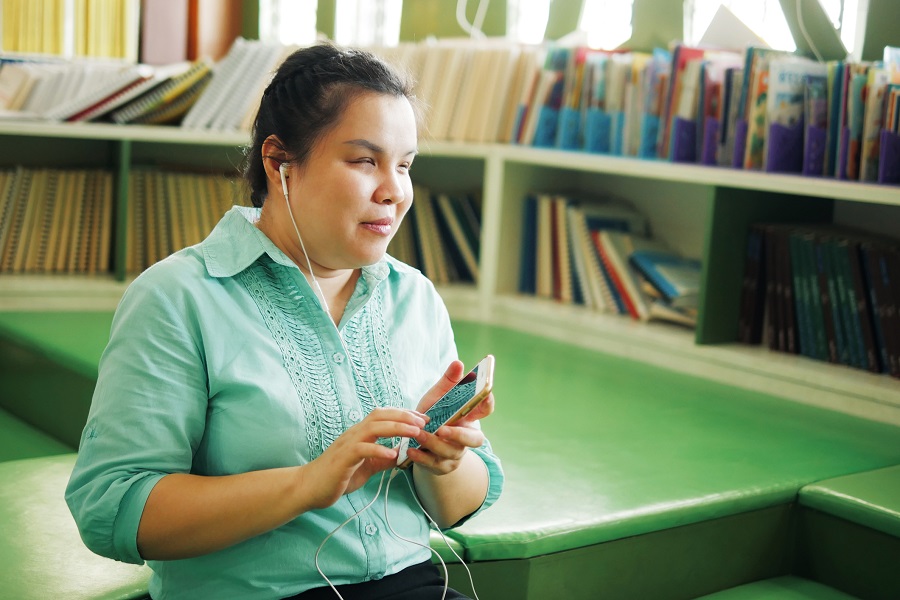State of Colorado Accessibility Newsletter - April 2024

Accessibility Essentials
All about accessibility statements
By Karen Pellegrin (she/her), TAP Senior Program Manager
Making your digital content accessible to people with disabilities is crucial. One way to achieve this is by placing a link to an accessibility statement page that lets your audience know how you are working to provide an accessible digital experience and how someone can contact you for support. Having an accessibility statement is also required to ensure you are complying with the recently established state accessibility rules. But what does an accessibility statement look like and how does it work?
Great news! Creating an accessibility statement is easy and may be of the most help for your customers. This is also where your accommodations plan comes into play and you will want to have staff trained and ready to respond to requests for assistance via the two forms of contact included in your statement.
An accessibility statement, at minimum, should include two things:
- A commitment to a timely response to reports of inaccessible Information and Communication technology (ICT)* or requests for reasonable accommodation or modification.
- Information about how individuals with disabilities can request reasonable accommodations or modifications or to report inaccessible ICT. This should include more than one contact method, which could be an accessible form to submit feedback, an email address or a toll-free phone number (with TTY) to contact personnel knowledgeable about the accessibility of the ICT.
Once you have developed your accessibility statement, you will need to post it where people can easily find it. One best practice is to create a web page with your statement and then include a link in the footer of all of your websites and applications to your statement page. This lets the information live in one central place, ensuring people can access it from anywhere.
Here are two great examples of accessibility statement pages from the City and County of Denver and the Colorado Department of Transportation (CDOT).
To help create your own statement, we have provided an example for you to use. Example: Technology Accessibility Statement.
*In simple terms, ICT means the use of any type of technology (e.g., computers, phones, wireless networks, internet, software, etc.) to create, store or display electronic data and information, as well as any associated content.
Accessibility News
Rules compliance speaker series
By Alice Huyler, Senior Policy Advisor, OIT Rulemaking
We’re bringing the rules to you! Now that 8 CCR 1501-11 Rules Establishing Technology Accessibility Standards are available, OIT offers multiple opportunities for government entities to learn about the rules and advance accessibility efforts. Don’t worry, recordings will be available if you miss a session.
Local government entities are invited to “Complying with the Technology Accessibility Statutes and Rules” on May 10, from 10 a.m. to 12 p.m. This online session is open to all but targeted for local government and special districts.
For state agencies, we’re offering a weekly deep dive into different topics with the Rules Speaker Series. These sessions are open to all state agencies and we encourage anyone interested to attend.
Reasonable accommodation will be provided upon request for persons with disabilities. If you are a person with a disability who requires an accommodation to participate in any of these presentations, please make your request to oit_accessibility@state.co.us at least one week in advance of the event.

Accessibility & You
Global Accessibility Awareness Day is May 16
By Theresa Montano, TAP Senior Solutions Architect of Accessibility
Global Accessibility Awareness Day (GAAD) is an annual event celebrated on the third Thursday in May, and is aimed at increasing awareness about digital access and inclusion for people with disabilities.
The top three accessibility issues commonly faced by people with disabilities are:
- Low contrast text, making it difficult or impossible for people with low vision, cognitive disabilities or color blindness to read digital content.
- Lack of awareness about accessibility as a human right and its importance in user experience design.
- Insufficient investment in accessibility by businesses, leading to a widened disability divide.
To help raise awareness of the GAAD Foundation’s goal of advancing and enhancing digital accessibility, WebAIM analyzed the top one million home pages for accessibility issues and found the following:
- 95.9% home pages with at least one WCAG 2.0 failure
- 56.8 average number of errors per home page
Causes of most common accessibility failures (% of home pages):
- Low contrast text: 81%
- Missing image alt text: 54.5%
- Empty links: 44.6%
- Missing form input labels: 48.6%
- Empty buttons: 28.2%
- Missing Document Language: 17.1%
Source: WebAIM Million Project
On May 16, the Technology Accessibility Program (TAP) encourages everyone to talk, think and learn about digital accessibility and work toward building a more inclusive Colorado.
Accessibility Tips
Diversity of abilities
By Kelly Tabor, TAP Communications Manager
Consumers of State of Colorado digital products and services may experience varying degrees of auditory, visual, cognitive, physical and speech disabilities. As we all work toward meeting our accessibility goals, remember that there are also three distinct types of disabilities and limitations: permanent, temporary and situational.
- Permanent disabilities are long-term, permanent impairments. These conditions could be present from birth, be a result of an illness or accident, or develop with age. People with permanent disabilities often require assistive technology.
- Temporary disabilities may arise due to illness, injury, or other short-term conditions. For example, someone with a broken arm or someone who needs to take pain medication have temporary disabilities. They may not know what accessibility solutions are available or how to request accommodations.
- Situational limitations include impairments from specific environmental conditions. For example, if someone is in a loud environment, they may be unable to hear audio or concentrate. Affordability barriers to technology products and slow internet connections are also considered situational limitations.
Keeping in mind that our customers experience a wide spectrum of abilities and barriers will help us achieve a Colorado for all.
Notable & Quotable
“Accessibility is not an extra step. It’s the steps many missed.”
- Debra Ruh, advocate for the rights of persons with disabilities

